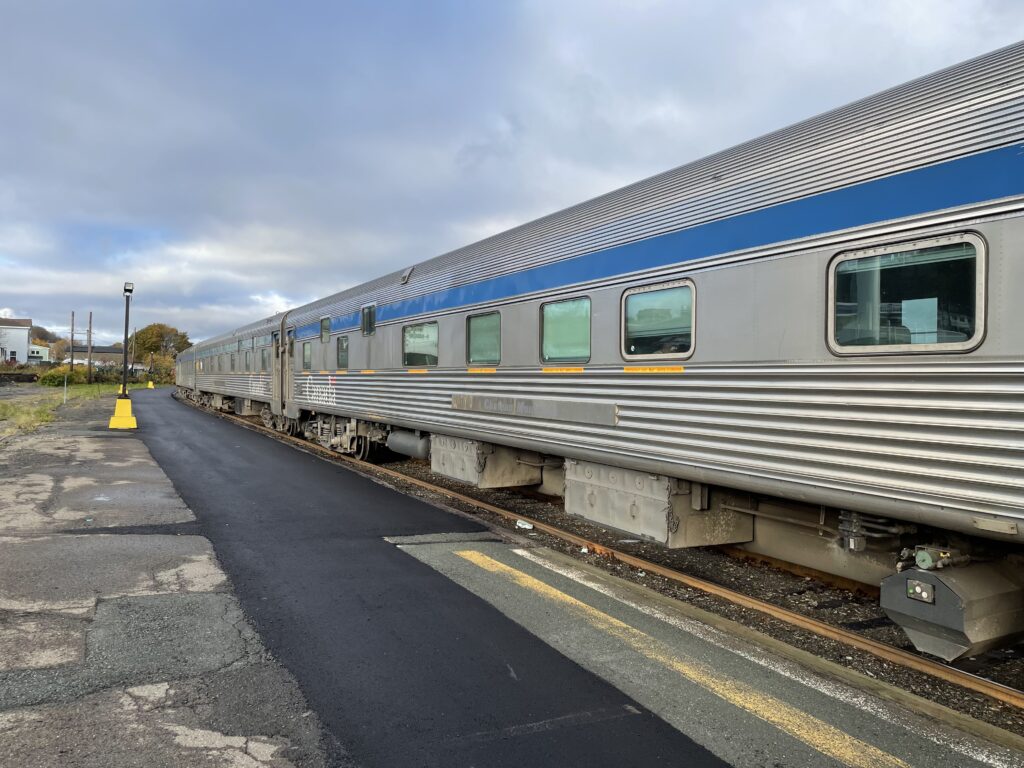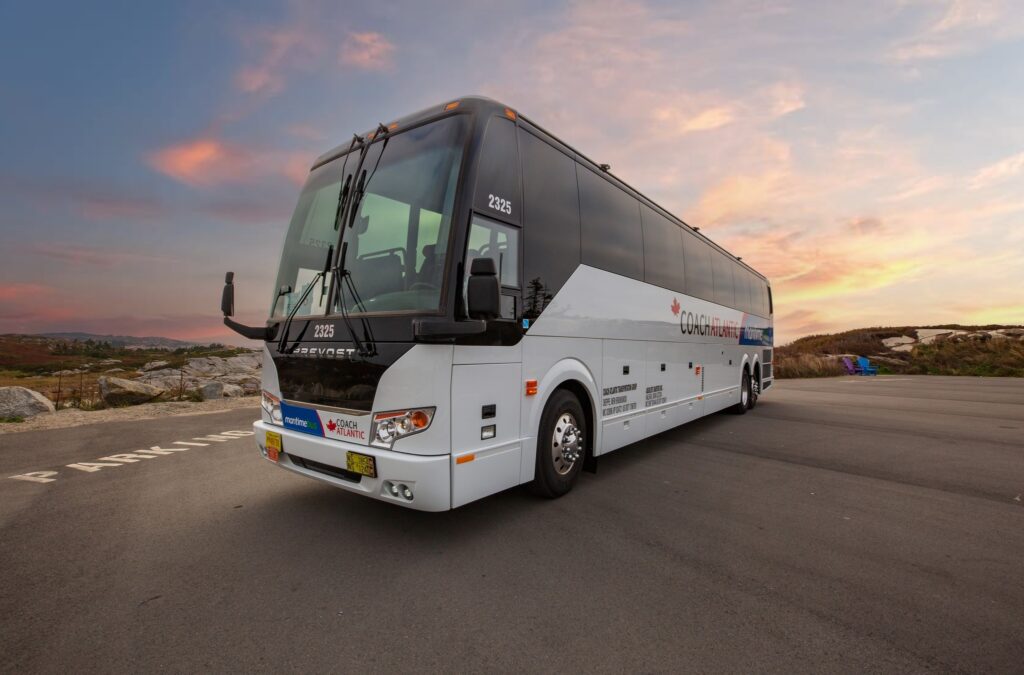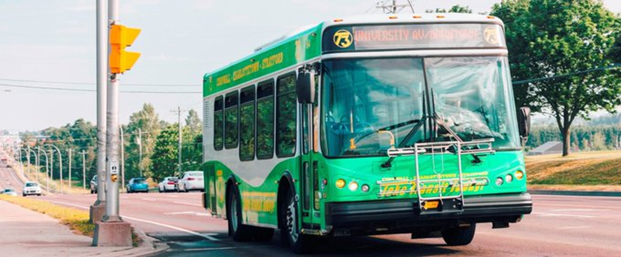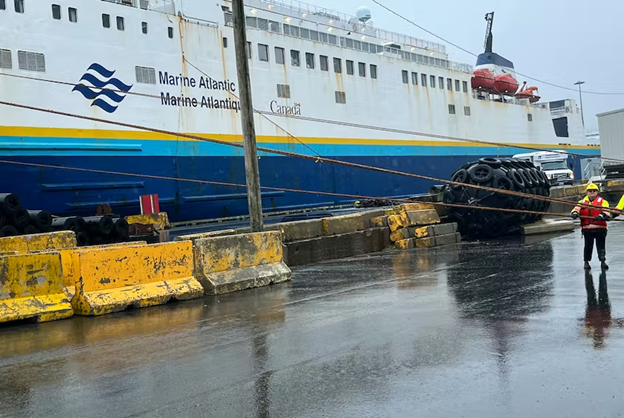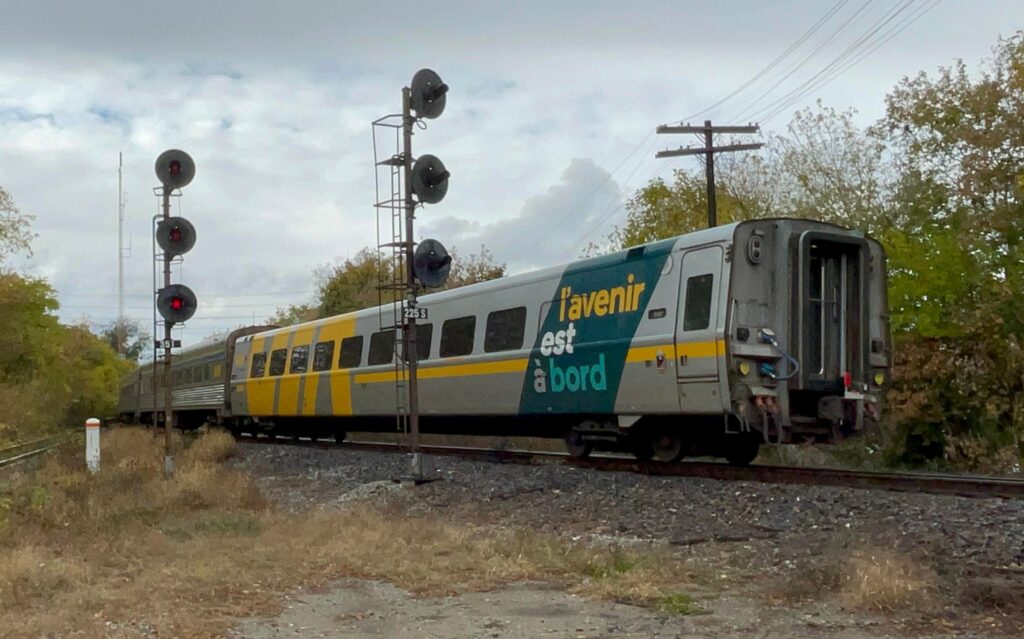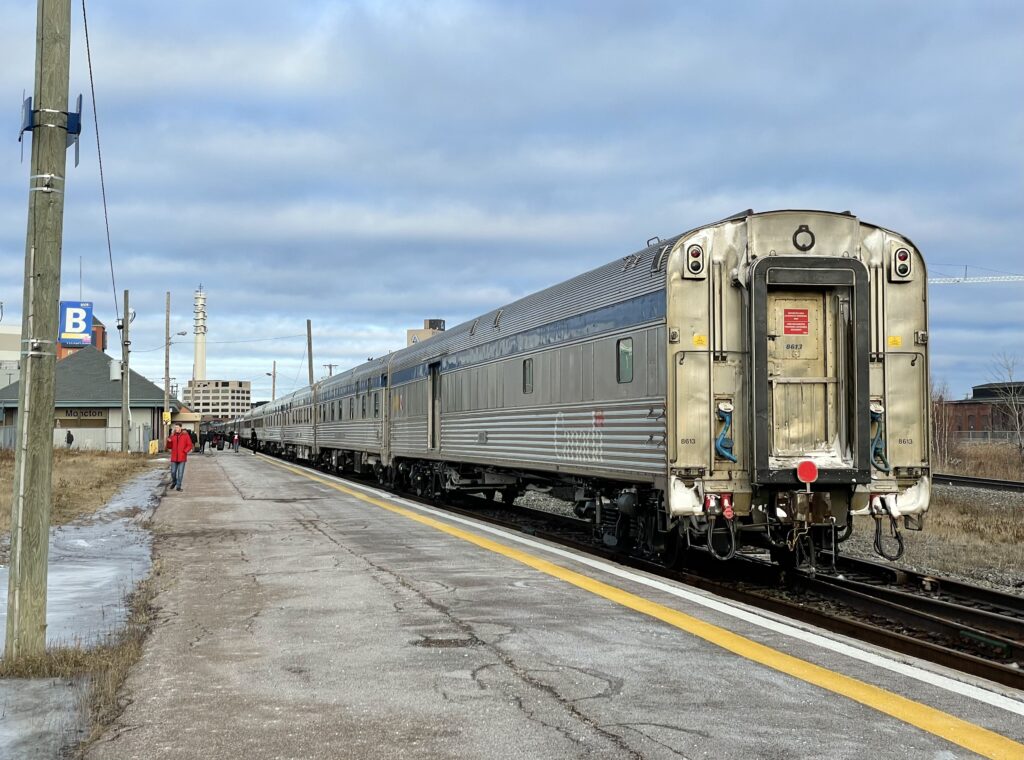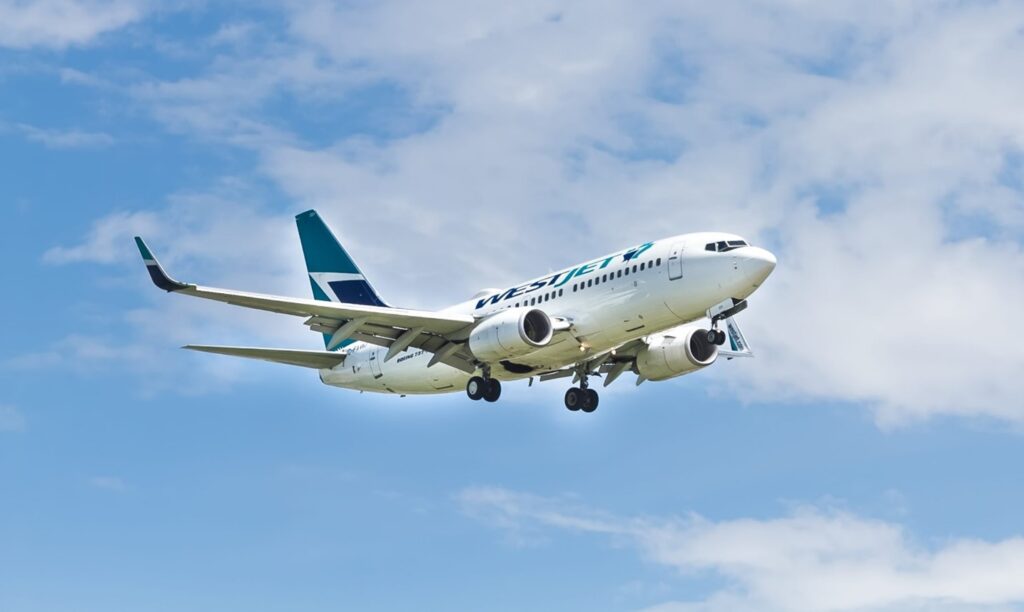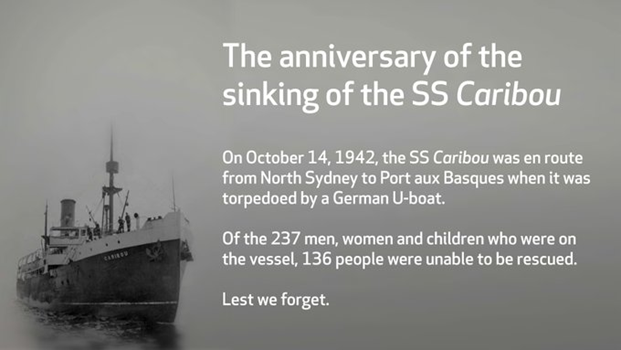Welcome to the first edition of Atlantic Transport News for 2023!
Here’s a look at what you’ll find in this edition:
- Hundreds of holiday travellers stranded on VIA’s Ocean
- WestJet ditches Halifax transatlantic hub
- Other airline news
- T3 Transit breaks the million mark
- Transit in Newfoundland’s capital is looking up, but some sour notes in the fanfare
- Other transit news
- Maritime Bus sees strong recovery while celebrating 10th anniversary
- Patience wearing thin on Chignecto isthmus mitigation
HUNDREDS OF HOLIDAY TRAVELLERS STRANDED ON VIA’s OCEAN
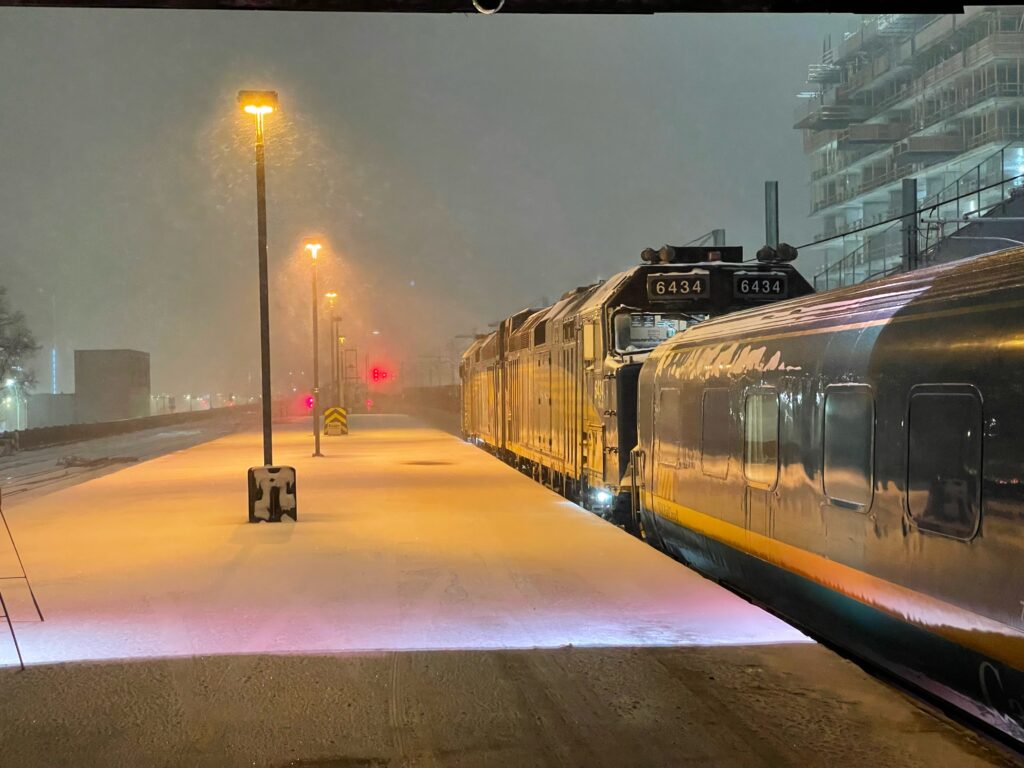
The 2022 holiday travel season descended into chaos just before Christmas, as a massive winter storm on December 23 shut down already overcrowded airports, closed highways, and brought much of VIA Rail’s network to a grinding halt. Though much media attention was focused on the Corridor, where several trains were stuck for many hours and all trains were cancelled for several days over Christmas, passengers travelling to and from the Maritimes for the holidays on board VIA’s Ocean found themselves stranded after many hours of uncertainty and little forward progress. After an initial delay due to a late arriving connection, passengers on board VIA #14 (scheduled to depart Montreal at 19h00 on December 23) were surprised to find their train returning to the station shortly after departure. Passengers were informed that a section of the line ahead, near Mont-Joli QC, was impassible due to the impacts of the storm.
After discussions between VIA operations and Canadian National (CN), a decision was made to delay departure until 06h00 the following morning, with assurances from CN that this would provide sufficient time for the line to be cleared and re-opened for the train to pass. The train coming from Halifax was held at Campbellton for the night, expecting to be ready to depart by later the next morning as well.
The next morning, VIA 14 departed and proceeded as far as Rivière-du-Loup, now running more than 13 hours behind schedule. After a further wait, passengers were informed that contrary to their initial assurances, CN would not now have the line cleared in time. Repair crews had reportedly ended their shift and wouldn’t return until sometime on the following day. With no other option, short of an overnight layover in Rivière-du-Loup, train #14 was then sent back to Montreal, arriving in the early hours of the morning on Christmas Day, exactly where it had started some 30 hours after its initial departure.
Passengers on the westbound train #15 from Halifax fared little better. Their train was left stranded for just as many hours at Campbellton, before being sent back to Halifax.
With little confidence in CN being able to open the line within their next promised window, Transport Action Atlantic President Tim Hayman, who was a passenger on train #14, was fortunate enough to find a flight home late on Christmas Day, but many passengers simply saw their plans to visit family for the holidays forfeited entirely, and were in some cases also stuck in Montreal over Christmas due to the train cancellations in the Corridor. Passengers were refunded in full for the affected trip, and also provided with travel credits; and those arriving back in Montreal in the wee hours of Christmas morning were put up in a hotel for the remainder of the night.
Weather delays and issues are entirely understandable, particularly in severe winter storms, but the entire ordeal raises serious questions about the resiliency of VIA’s operations, and highlights the ever-present issue of VIA being reliant on the “infrastructure owner” or “host railway” – i.e. CN – to move its trains in a safe and timely manner.
There are several key questions raised by this situation:
- What was the exact nature of the issue making the line impassible, and why were CN crews unable to clear the line as expected?
- What efforts did CN make to prioritize opening the line and avoiding stranding these trains and their passengers?
- What contingency planning does CN have in place for these scenarios, and how did their efforts here compare to the efforts that would be made to clear a high priority freight line?
- Was there any consideration of alternative routings for the trains (i.e. over the Napadogan Subdivision through New Brunswick)?
- Does VIA have recourse within their track access agreements with CN to seek compensation for a failure to move its trains in a timely fashion, or to their destinations at all?
- What considerations did VIA management give to alternative transportation for passengers?
Transport Action believes the abysmal performance of Canada’s tattered passenger rail system this holiday season should be grounds for a full independent enquiry, to determine where government, VIA Rail management, and the host railways (CN) have failed, and to recommend immediate action to address this national embarrassment.
TAA has been invited to appear before the House of Commons Standing Committee on Transport, Infrastructure and Communities on January 26, and will take the opportunity to press the committee to look further into these issues, and identify ways to ensure that passengers aren’t left stranded in similar circumstances in future storms.
-Tim Hayman
WESTJET DITCHES HALIFAX TRANSATLANTIC HUB
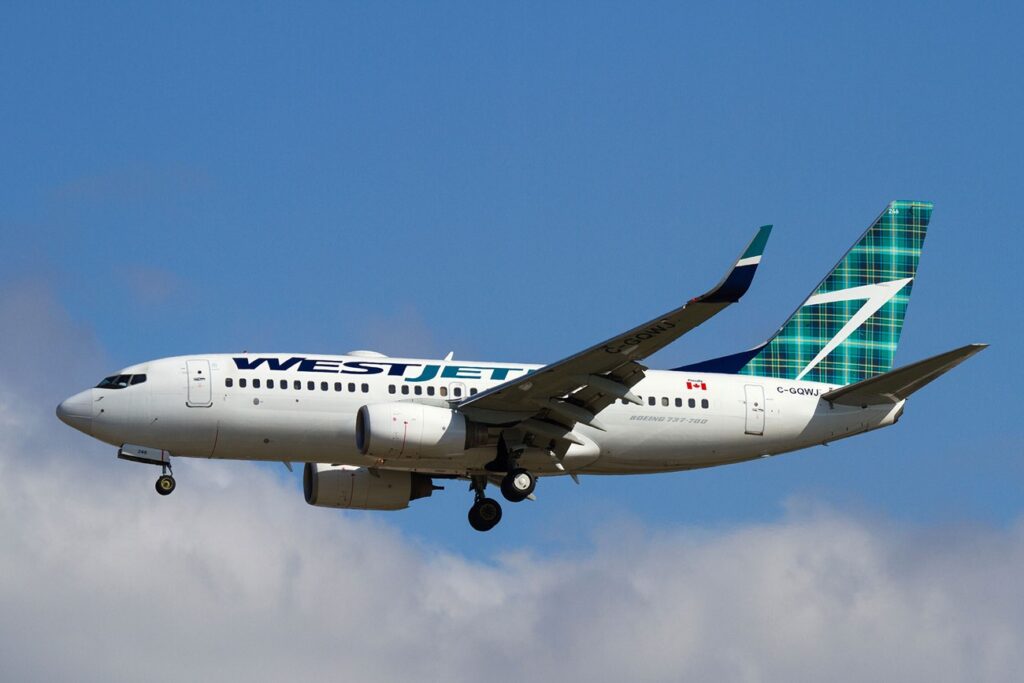
The management at Halifax Stanfield International Airport had held out some slim hope until the last, but in the end it was not to be. WestJet’s new corporate strategy of returning to its roots in the western provinces has brought down the curtain on the transatlantic hub at YHZ. The final confirmation came not by way of any formal announcement from the Calgary-based carrier, but in a story published by an international online trade journal. Simple Flying reported on December 20 that the new western focus would eliminate not only all WestJet overseas flights from Halifax, but from Toronto as well.
https://simpleflying.com/westjet-cuts-non-calgary-europe-routes/
The airline made its first step into the transatlantic market in 2013, when it introduced a non-stop flight from St. John’s to Dublin, using an extended-range Boeing 737. The initiative was widely hailed as the most successful new route in the airline’s history – but the honeymoon was soon over. Just five years later the Dublin flight was relocated to Halifax, with the airline announcing that it made better operational sense to adopt Stanfield as its hub for all its European destinations, which also included Glasgow, London Gatwick, and Paris. That strategy evidently wasn’t a success either. Some industry analysts have suggested that Air Canada is so firmly entrenched in eastern Canada that no other carrier can effectively compete. In any event, WestJet’s newly-minted CEO Alexis von Hoensbroech lost no time in beating a westward retreat shortly after his appointment.
“We think the West has more room for growth for us that the East,” he told the Globe and Mail following a quick strategic review. Management at Stanfield International kept trying to persuade the carrier to retain at least some of its overseas services, but to no avail. Airport spokesperson Tiffany Chase confirmed following publication of the Simple Flying story that the only regularly scheduled transatlantic service from YHZ next summer will be a daily Air Canada flight to London Heathrow. Air Canada plans to continue operating that route year-round with a reduced off-season frequency. There will also be seasonal summer flights to and from Frankfurt several times weekly in 2023 by leisure carriers Condor and Eurowings Discover.
“Our Air Service Development team continues to connect with other carriers to promote the Halifax Stanfield advantage and business case,” Ms. Chase said, “but it’s unlikely we’ll have another new non-stop European service announced and operating for summer 2023.”
IN OTHER AIRLINE NEWS…

The news isn’t all bad for Halifax Stanfield. Air Canada has resumed direct flights from YHZ to New York (Newark), which had been missing from the departures board since the pandemic began. The service began with four departures a week effective December 16, and ramped up to daily as of January 8. The U.S. preclearance facility at YHZ provides an advantage for departing passengers who can pre-clear customs in Halifax. They then arrive in Newark as domestic travellers, where they can conveniently connect to other American destinations with minimum delay.
And one more domestic travel option will be available from Halifax in February, when Porter Airlines introduces a new direct service to and from Toronto Pearson, using its new 132-seat Embraer E195-E2 aircraft. This rapidly growing airline officially took delivery of the first two of a planned 50 medium-range jets from the Brazilian manufacturer on December 21. Porter is the first North American carrier to introduce this model, and has chosen to configure the cabin with 132 seats – 14 fewer than the maximum the plane is designed for. In addition to more personal space, the airline says the E195-E2 will offer every passenger an elevated economy experience that includes no middle seats, complimentary beer and wine served in real glassware, a selection of premium snacks, and free, fast wifi.
In sharp contrast to WestJet, Porter appears intent on expanding service in Atlantic Canada. While WestJet has suspended flights between Halifax and St. John’s for nearly four months between January and late April, Porter will continue to ply the route offering at least one departure on most days during the slow season of the year. By May, there will be three round trips daily Sunday through Friday between YHZ and YYT. And Porter is also continuing to provide winter service between Moncton and Ottawa/Toronto. We’ll provide further details on Porter’s plans in a future issue of this newsletter.
Meanwhile, PAL Airlines is continuing its service between Newfoundland and New Brunswick through the winter. Although Fredericton has been dropped from the route map until spring, PAL still is flying St. John’s-Deer Lake-Moncton and return five days a week on the schedule that began in January.
-Ted Bartlett
T3 TRANSIT BREAKS THE ONE MILLION MARK

Just before 2022 passed into history, Charlottetown’s T3 Transit proudly reached a milestone – breaking yet another record after months of successive, phenomenal growth. On the afternoon of New Year’s Eve, the system boarded its one millionth passenger for the year – a truly impressive total for a small urban community.
“We woke up Saturday morning needing 1,100 more rides,” said Mike Cassidy, whose company operates the system on behalf of the City. By mid-afternoon, we hit the one million mark, coming right down to the wire as 2022 was coming to an end,” he told the Guardian.
“This is a significant milestone for T3 Transit and public transit in our province,” Premier Dennis King told the newspaper. He attributed the growth in transit ridership to such government initiatives as discounted fares for adults and free transit for children and students.
T3 Transit commenced operation in September 2005 with just four vehicles, but now employs a team of 43 people and operates 35 vehicles. As part of its ongoing expansion, the system plans to introduce new electric buses in the coming year. The vehicles are expected to be tendered in March.
Meanwhile, an extra round trip per day has been added on rural public transit routes between Tignish and Summerside and between Charlottetown and Summerside, effective December 29.
“Going from two round trips per day to three will improve options for Prince County residents using public transit to get to and from work, school and essential services,” said Transportation and Infrastructure Minister Cory Deagle. “We are aligning our schedule and routes based on demand and rider feedback. We will continue to make changes to our service over time to ensure that using our rural public transit service is easy and convenient for Islanders.”
Since launching in October 2021, Transit PEI has provided 57,733 one-way trips across Prince Edward Island. For November 2022, Transit PEI averaged 340 passenger fares per day. The fare for a one-way trip is $2. Monthly transit passes for all transit routes on Prince Edward Island are available for $20 for adults and $10 for seniors and post-secondary students. This offer was recently extended to the end of the current fiscal year which ends on March 31, but many observers are anticipating that it will be renewed.
TRANSIT IN NEWFOUNDLAND’S CAPITAL IS LOOKING UP, BUT SOME SOUR NOTES IN THE FANFARE
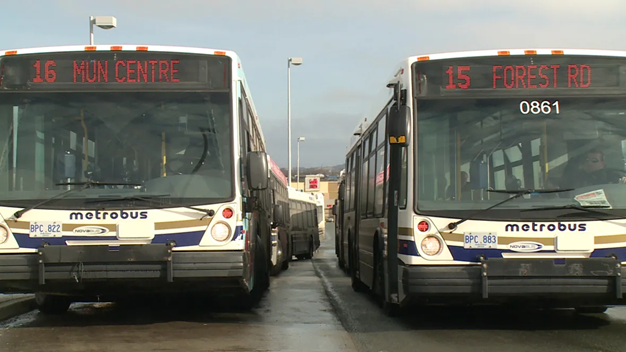
The city of St John’s has been taking important steps in recent years to address decades of decline in the bus service it provides. Ridership figures in October 2022 were the highest since records began – 16.9% up from 2019 before COVID hit, and in response the city’s latest budget included a nearly 10% increase in the city’s subsidy – some of which will go towards adding three buses to the most used routes during the summer months to offset some of the cuts normally made to service over that period.
Some of the rise in numbers could be attributable to the extension of a provincially co-funded pilot program that gave free bus passes to people on income support and was broadened this year to include low income seniors and youths receiving services from the Youth Services Program. But there were some stumbles along the way.
In 2020, free transit for young children was extended to the under-12s but in reaction to bus driver complaints about fare dodging and abuse, the service announced in August that children would need to come to Metrobus’s offices in person with photo ID to be issued passes that would cover them until they turned 12. Ironically those offices are located a 45 minute bus ride from downtown. When I checked in mid-October, fewer than 100 such passes had been issued but Metrobus’ manager said at the time the program “has gone smoothly” and that no targets for numbers to distribute had been set.
Also in the Grinch column, once again Metrobus Transit stopped service at 18:00 Christmas eve and over Christmas Eve and Boxing Day. It also stopped service New Years Eve at 18:00 and on New Year’s Day. Halifax does better, as do most large cities in Canada, although this is also a problem in PEI which made a well-publicized push to improve transit in 2022 and in Moncton and Saint John, New Brunswick. Considering the weather, taxi shortages, the need for those without easy car access to reach friends and family and the dangers of seasonal drunk driving, we hope St John’s and other Atlantic cities will reconsider this next year.
-David Brake
IN OTHER TRANSIT NEWS…
Halifax Transit is showing a steady recovery, but its ridership isn’t yet up to pre-pandemic levels. The system recorded a total of 23,267,150 boardings in calendar 2022, compared with 17,011,739 a year earlier. The corresponding figure for 2019 was 30,732,930 boardings.
Moncton’s Codiac Transpo didn’t have complete final numbers available, but operations manager Alex Grncarovski said 2022 was a very good year with boardings exceeding 1.7 million. “It’s a positive trend that we hope to continue in 2023.”
MARITIME BUS SEES STRONG RECOVERY WHILE CELEBRATING 10th ANNIVERSARY
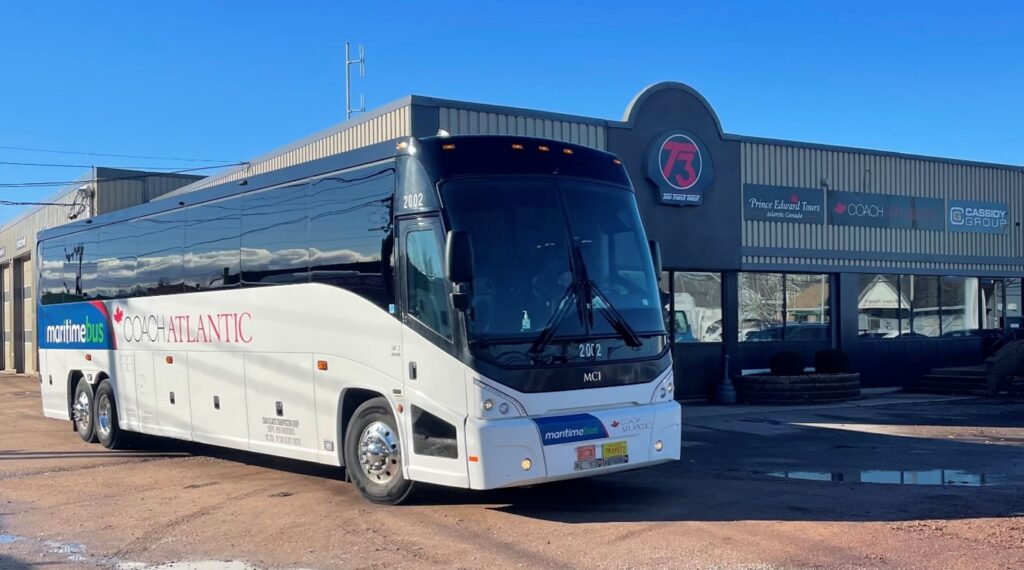
December 1 was a red-letter day for Maritime Bus. It marked the tenth anniversary of the pivotal moment when the fledgling Charlottetown-based carrier stepped in to fill the void created by the foreign-owned Acadian Lines/Orleans Express. It hasn’t exactly been a walk in the park for founder Mike Cassidy, but he proudly looks back at a decade of reliable service.
COVID-19 was a massive challenge – one that cost his company millions. But Maritime Bus kept going through the darkest days, albeit on a reduced schedule, carrying small numbers of people and lots of packages throughout the three provinces. Although the schedule still isn’t quite back to pre-pandemic levels, traffic is now showing strong recovery, and service has been running seven days a week since September.
Ridership has now returned to 85% of what it was before COVID struck, Mr. Cassidy reported in early January. In December 2022 the buses handled some 14,000 passengers, as compared to 17,000 in the same month of 2019. And in the first ten days of January they did ever better: 5000 fares – just 300 short of the ridership for the same period pre-pandemic.
“Very pleased!” he said. But there’s still a way to go. There’s still no interlining with motorcoach services to the rest of Canada. Maritime Bus stops at Edmundston, so it’s not yet possible to ride or ship a package into Quebec or beyond as in pre-COVID times, with no indication as to when that might change.
PATIENCE WEARING THIN ON CHIGNECTO ISTHMUS MITIGATION

Potential disastrous consequences for a vital transportation corridor connecting Nova Scotia with the rest of Canada have been recognized for years. The massive tides of the Bay of Fundy are being increasingly influenced by climate change, with ever higher water levels being recorded during major weather events. A study released last year, jointly funded by the federal, Nova Scotia and New Brunswick governments, confirmed the risk that both the CN rail line and the Trans Canada Highway across the low-lying Chignecto Isthmus are in danger of being eventually overwhelmed by rising waters. That would sever a critically important link that carries millions of dollars worth of commerce each and every day.
The report identified three possible strategies to address the issue, with the most elaborate one having an estimated price tag in excess of $300 million. The recommended timeline for completing the project as ten years, something that appeared reasonable at the time. In fact, back then Amherst Mayor David Kogon told CBC News he viewed the plan as reasonable and realistic.
But the mayor has apparently changed his tune, and so have many others. September’s devastation caused by hurricane Fiona caused them to think again.
“Hurricane Fiona scared the bejeebers out of the people in our area,” Mayor Kogon said in an early January interview. Fiona mostly brought high winds and downed trees to the Chignecto Isthmus, but had it struck at a slightly different angle at high tide, he added, Amherst and vital trade routes in the area certainly could have been seriously affected.
“That storm surge is a potential problem here, depending on the state of the tide. Quite honestly, we were lucky and I don’t want to rely on good luck to protect us going forward,” he told the CBC. “We dodged a bullet.”
There’s been no indication, however, that either level of government is revisiting the timeline. There is no agreement yet in place as to how the cost of the project would be shared. Both provinces, not surprisingly, are adamant that Ottawa needs to take a leading role.







